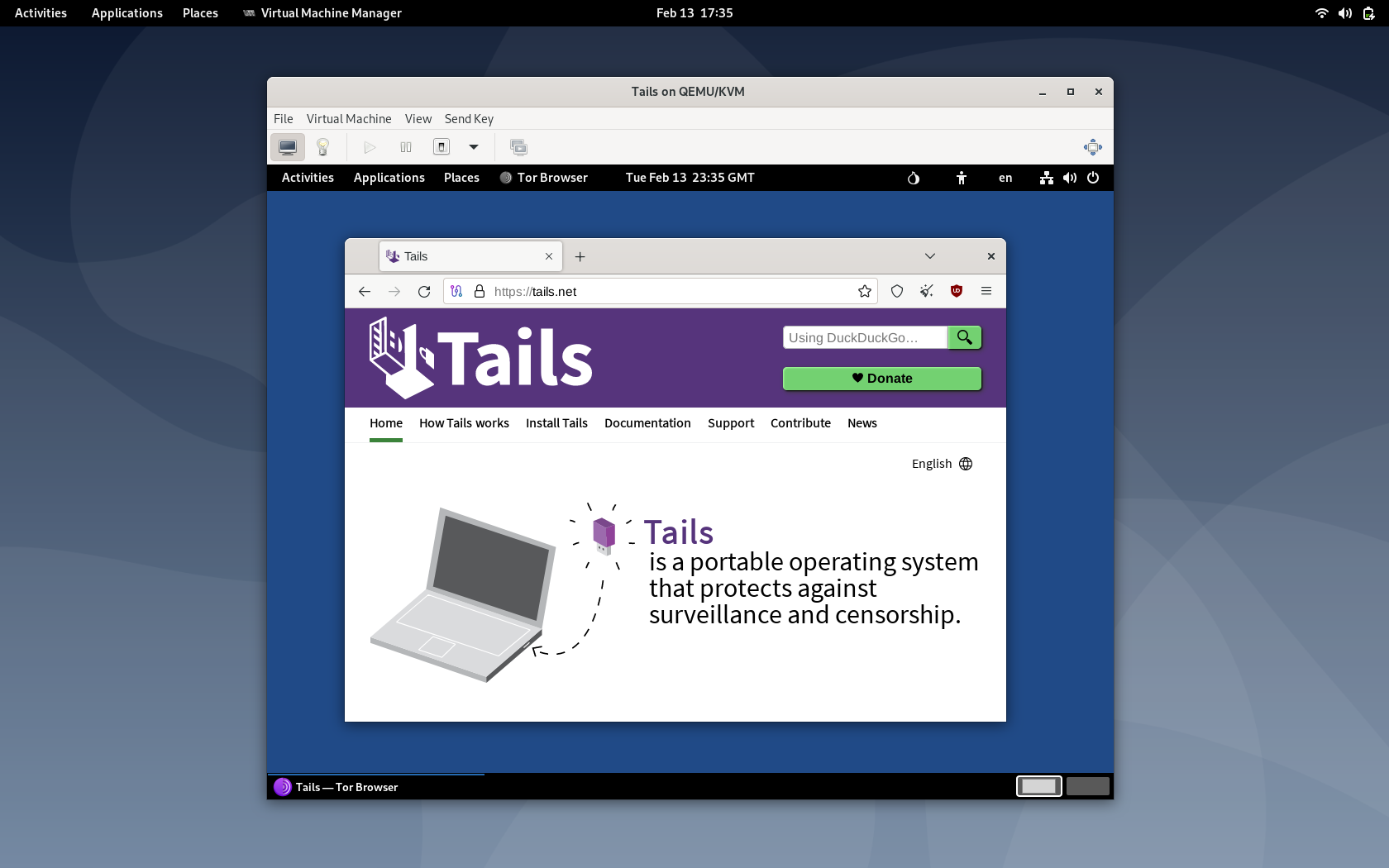- doc
- advanced topics
- 在虛擬器下執行
有些情況下可以不必每次都得啟動電腦才能執行 Tails ,可透過 virtual machines方式。
With virtual machines, it is possible to run Tails inside a host operating system (Linux, Windows, or macOS). A virtual machine emulates a real computer and its operating system, called a guest, which appears in a window on the host operating system.
When running Tails in a virtual machine, you can use most features of Tails from your usual operating system, and you can use both Tails and your usual operating system in parallel, without the need to restart the computer.
We do not currently provide a solution for running a virtual machine inside a Tails host.
This is how Tails looks when run in a virtual machine on Debian:
Security considerations
Running Tails inside a virtual machine has various security implications. Depending on the host operating system and your security needs, running Tails in a virtual machine might be dangerous.
原機作業系統和 虛擬化軟體 都可以監控 Tails 底下的活動。
如果作業系統受到軟體、鍵盤側錄器或 其它惡意軟體的入侵,它可能會破壞 Tails 的安全功能。
Only run Tails in a virtual machine if both the host operating system and the virtualization software are trustworthy.
Tails 期間的記錄很可能留在本地機器的硬碟上。例如原機作業系統通常會使用 swapping (or paging) 其會複製部份的 RAM 到硬碟上。
Only run Tails in a virtual machine if leaving traces on the hard disk is not a concern for you.
這是當在虛擬器下執行Tails 會收到警告的原因。
The Tails virtual machine does not modify the behaviour of the host operating system and the network traffic of the host is not anonymized. The MAC address of the computer is not modified by the MAC address anonymization feature of Tails when run in a virtual machine.
Virtualization solutions
To run Tails inside a virtual machine, you need to have virtualization software installed on the host operating system. Different virtualization software exists for Linux, Windows, and macOS.
We only mention Free Software, because we believe that it is a necessary condition to be trustworthy. Proprietary virtualization software exist, such as VMWare, but is not listed here on purpose.
VirtualBox is available on Linux, Windows, and Mac. Its Free Software version does not include support for USB devices and does not allow to use a Persistent Storage.
GNOME Boxes is only available on Linux. It has a simpler user interface than virt-manager but does not allow to use a Persistent Storage.
virt-manager is only available on Linux. It has a more complex user interface than GNOME Boxes but allows to use a Persistent Storage, either by:
- Starting Tails from a USB stick.
- 建立一個虛擬的 USB 儲存磁區,並將其存成原機作業系統下的一支單獨檔案。

